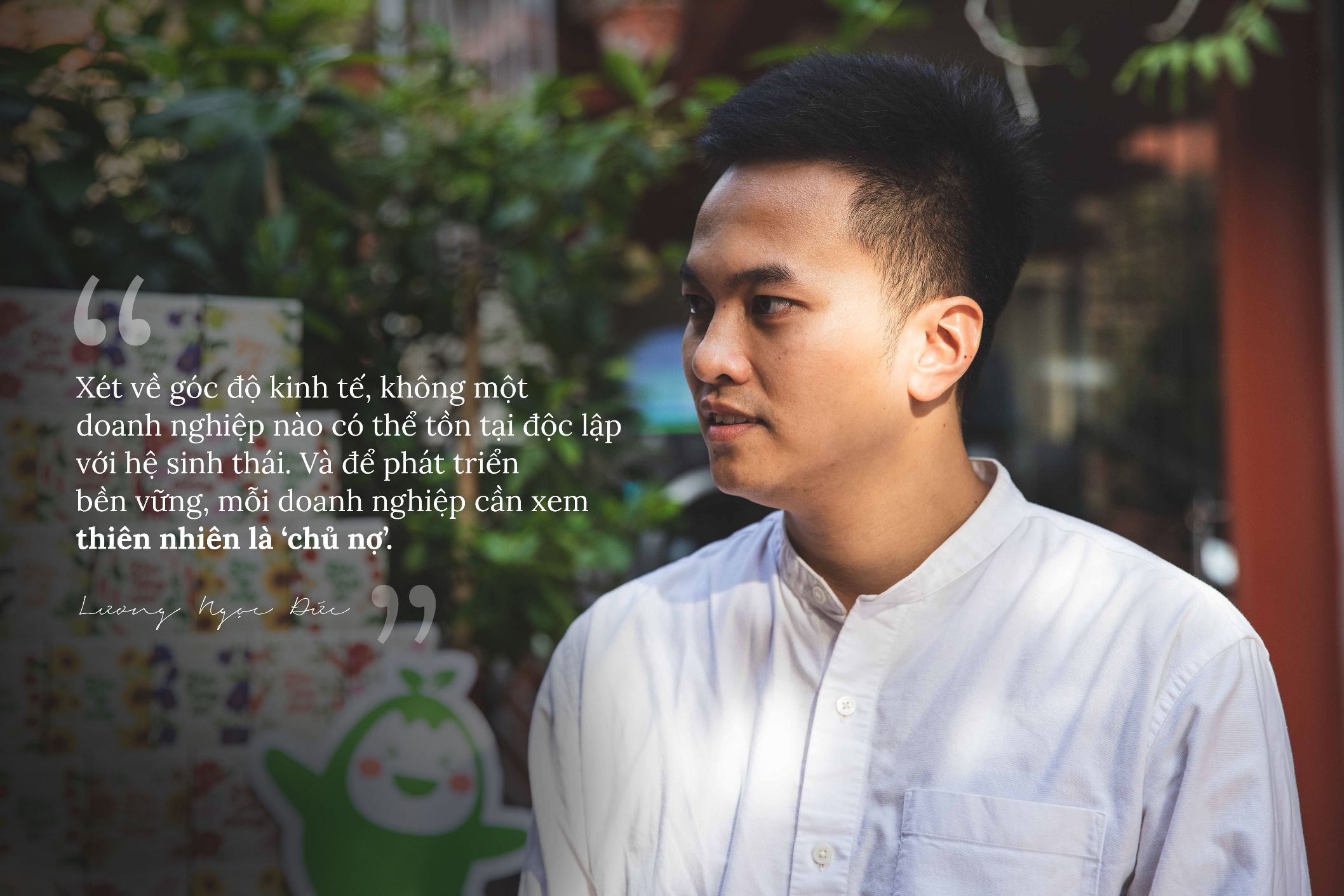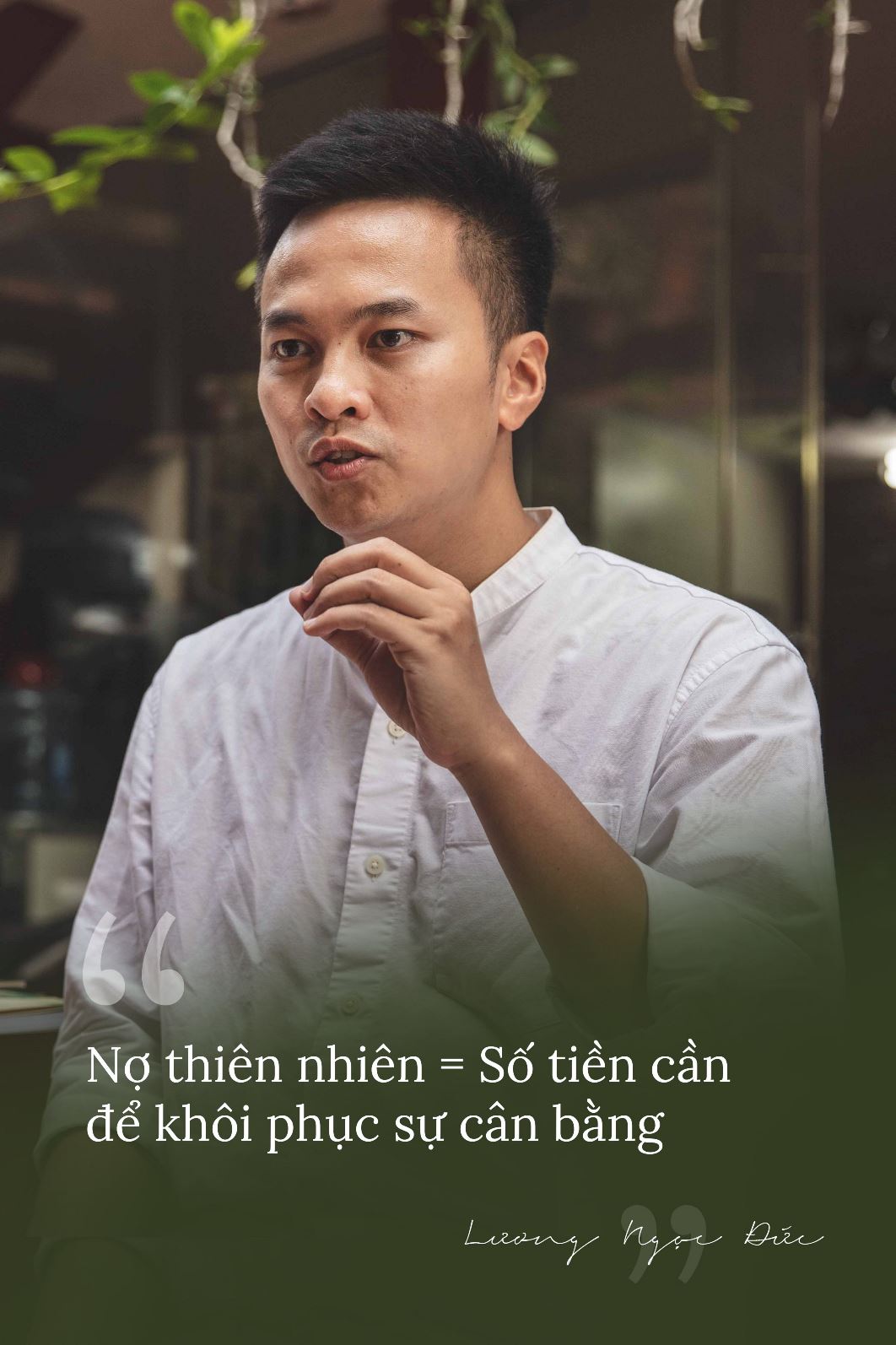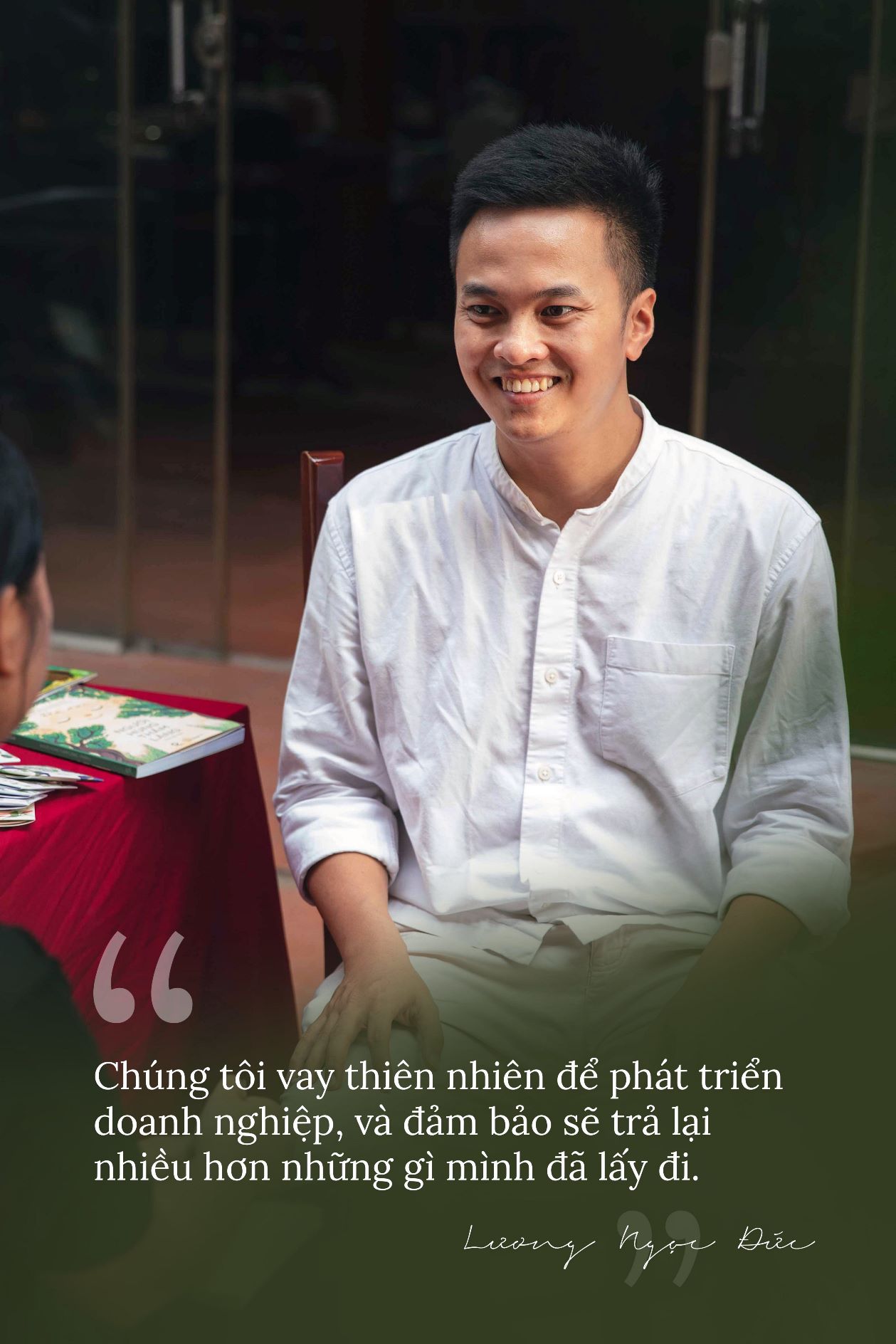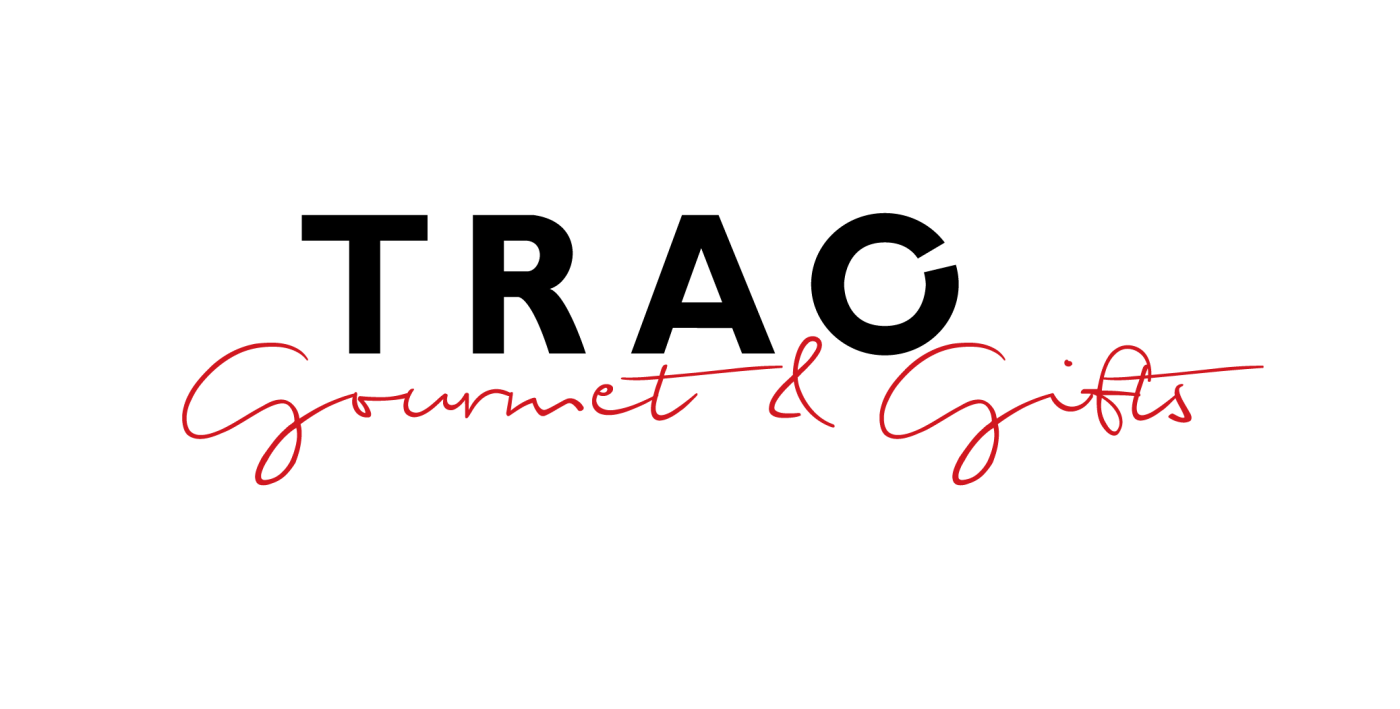News, Gieo and Media, Gieo's Blog, News about Trao Group, Trao Group
Giáo dục Thời đại Newspaper: CEO of Trao Group Proposes Amending the 600-Year-Old Accounting Equation
Link to the article in the Giáo dục Thời Đại Newspaper: Link
Recently, on April 16, 2025, the Partnering for Green Growth and the Global Goals 2030 (P4G) Summit was held in Hanoi. Many contents and initiatives were exchanged related to aspects such as finance, technology, and education at the state and enterprise levels.
In an atmosphere focused on green growth goals, in an interview with the Giáo dục và Thời đại Newspaper, Mr. Lương Ngọc Đức – Co-founder of Trao Group Joint Stock Company – proposed groundbreaking initiatives related to amending the 600-year-old accounting equation to serve a sustainable economy.
A reporter from the Giáo dục và Thời đại Newspaper conducted an interview with Mr. Lương Ngọc Đức on this subject.

1. In your view, what is sustainable development?
Sustainable development is development based on balance for the entire ecosystem. It's when development doesn't take away the 'free rights' of future generations, such as clean air, clear water, or biodiversity. These are the rights that have been shared by all creatures since before humans were present on this Earth.
2. And how can that be reflected in the accounting equation?
From an economic perspective, no enterprise can exist independently of the ecosystem. To achieve sustainable development, every business must view nature as a 'creditor.' If a fisherman catches a fish, the fish doesn't belong to the fisherman; it is merely a loan from the 'bank of nature.' When the fish is sold, the fisherman becomes responsible for repaying this loan through conservation and marine stewardship activities. This, in turn, provides the sea with sustainable resources for regeneration and sustenance for the people.
However, if we look at the accounting equation currently being applied and taught worldwide, we see an imbalance where the 'nature loan' does not exist. The 600-year-old equation looks like this:
Assets = Owner's Equity + Liabilities
With this equation, when a fisherman catches a fish, the fish is automatically recognized as belonging to the Owner's Equity. This means the enterprise is legally permitted to partially or entirely privatize natural assets that they did not create.
This explains why the more the economy develops, the more susceptible nature is to destruction. If the loan does not exist, the responsibility to repay nature also does not exist. As a result, humanity is now facing severe consequences caused by economic activities, such as air pollution, water contamination, and climate change.
3. So, how should the accounting equation be adjusted toward sustainability?
I propose that the equation be revised as follows:
Assets = Nature Liability + Owner's Equity + Liabilities
This equation helps every enterprise understand its obligation to repay the loan to the 'bank of nature.' Consequently, business activities will be inseparable from social responsibilities. And the enterprise's 'customers' will not only be human beings but also the forests, the rivers, and all living creatures.
4. You mentioned that nature is also an important loan source for an enterprise. How will this loan source arise?
In nature, borrowing from nature always occurs. Animal species utilize resources like water, air, and food just sufficiently to sustain their lives. However, through the very act of living, they also care for nature. Bears that eat fruit go on to 'sow seeds.' Bees that collect nectar help flowers pollinate. Forgetful squirrels that bury thousands of nuts in preparation for winter are, in fact, planting forests. Each species fulfills its role in the ecosystem. The act of giving and receiving occurs simultaneously. Therefore, the loans will constantly arise and be repaid.
In the economy, the nature loan will only arise when the balance is disrupted, when 'repayment' activities are not equivalent to what has been taken away. If this definition is followed, not every enterprise will have a repayment responsibility, for example, those social enterprises. This concept only came into existence in the 1970s to differentiate them from traditional business models. When an enterprise sets its goal as the common development of the environment and society as a whole, this loan will be very low or will not arise.

5. Your equation is excellent. But I suppose we also have to quantify that "nature loan," don't we?
This loan source can be calculated; however, we still need further research to apply it in practice.
One way we can use to value it is that the nature loan will have a minimum value equal to the amount needed to restore the state of balance if it's disrupted by the enterprise. For example, if an enterprise's production process discharges a large amount of toxic wastewater, the minimum nature repayment cost will be equal to the cost of restoring the water to its previously pristine state. If an enterprise generates a large amount of plastic waste, it must commit to solving this problem so that it's no longer an issue for the environment and future generations. If an enterprise repays all its nature loans, it will no longer need to perform corporate social responsibility or charity activities.
Despite this, sometimes the costs to restore the state of balance may be so large that they exceed the enterprise's ability to pay. For instance, nature might take millions of years to create a primary forest, but it only takes humans a few weeks to erase that forest for economic goals. In this case, an enterprise might be very successful financially, but still lose the ability to repay its debt to nature.
In addition, another approach to valuing nature is using the carbon metric. In 2020, the International Monetary Fund (IMF) conducted a study to value elephants. Through their movement and search for food, elephants help reduce the density of smaller trees, facilitating the growth of larger trees, which leads to more carbon being stored in the forest. If the market price for mitigating one ton of CO2 was less than 25 USD in 2019, then the carbon value of one elephant in the African forest over its lifetime to the entire ecosystem is 1.75 million USD. However, if a hunter shoots an elephant to sell its tusks, they would only earn 40,000 USD.

6. Can you cite evidence that Trao Group respects the environment and genuinely treats it as a loan?
We no longer separate business activities from social responsibilities. Since 2016, we have founded the Gieo project – The Miraculous Gift from a Seed – to help enterprises, schools, and communities build the habit of planting. Subsequently, the more customers Gieo serves, the more seeds will be sown, the more trees will be planted, and the more people will be inspired to become nature lovers.
Additionally, we also carry out many other activities to care for nature, such as publishing books and composing music. One of Trao’s prominent upcoming projects is the release of the album "Tiger", which features seven children's songs. The album is based on the book ‘Trí khôn của ta đây – Part 2’ (Here is my wisdom – The Sequel), published by Trao Books. The release of this music album is also a way to contribute to forest and rare animal conservation activities in Vietnam.
We borrow from nature to grow our enterprise, and we ensure that we will give back more than we have taken.
Thank you, Lương Ngọc Đức, and we wish you continued success in your journey of sowing many good seeds!
According to the Giáo dục và Thời đại Newspaper


